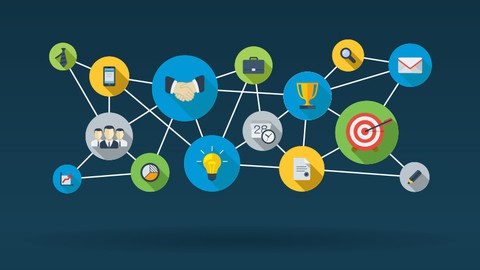
API Crash Course: What is an API, how to create it & test it
What you’ll learn
-
What is an API
-
Difference between API & Webservice
-
HTTP Basics
-
Difference between XML & JSON
-
How to create a mock API
-
How to test APIs using Postman
Requirements
-
English knowledge
-
PC or Laptop
-
Internet Connection
Description
Hello
In this course we will explain what an API is.
API is the acronym for Application Programming Interface, which is a software intermediary that allows two applications to talk to each other. Each time you use an app like Facebook, send an instant message, or check the weather on your phone, you’re using an API.
What exactly is an API? Finally learn for yourself in this helpful video from MuleSoft, the API experts.
When you use an application on your mobile phone, the application connects to the Internet and sends data to a server. The server then retrieves that data, interprets it, performs the necessary actions and sends it back to your phone. The application then interprets that data and presents you with the information you wanted in a readable way. This is what an API is – all of this happens via API.
To explain this better, let us take a familiar example.
Imagine you’re sitting at a table in a restaurant with a menu of choices to order from. The kitchen is the part of the “system” that will prepare your order. What is missing is the critical link to communicate your order to the kitchen and deliver your food back to your table. That’s where the waiter or API comes in. The waiter is the messenger – or API – that takes your request or order and tells the kitchen – the system – what to do. Then the waiter delivers the response back to you; in this case, it is the food.
Here is a real-life API example. You may be familiar with the process of searching flights online. Just like the restaurant, you have a variety of options to choose from, including different cities, departure and return dates, and more. Let us imagine that you’re booking you are flight on an airline website. You choose a departure city and date, a return city and date, cabin class, as well as other variables. In order to book your flight, you interact with the airline’s website to access their database and see if any seats are available on those dates and what the costs might be.
However, what if you are not using the airline’s website––a channel that has direct access to the information? What if you are using an online travel service, such as Kayak or Expedia, which aggregates information from a number of airline databases?
The travel service, in this case, interacts with the airline’s API. The API is the interface that, like your helpful waiter, can be asked by that online travel service to get information from the airline’s database to book seats, baggage options, etc. The API then takes the airline’s response to your request and delivers it right back to the online travel service, which then shows you the most updated, relevant information.
Who this course is for:
- Software Engineers
- Software Developers
- Software Testers
- CS Students






